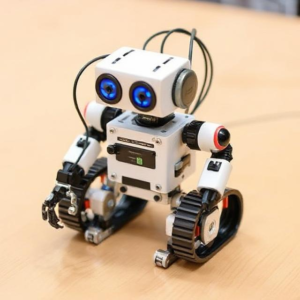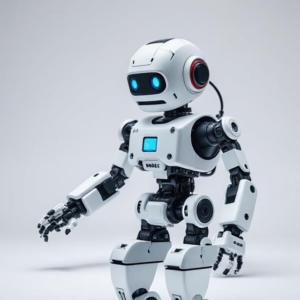Digital techniques are methods that use binary numbers (0s and 1s) to represent and process data. These techniques form the backbone of almost every modern electronic system — from computers and smartphones to smartwatches and robots.

In basic digital systems, logic gates (like AND, OR, NOT) are used to perform operations. Advanced digital techniques build on these basics and are used to create faster, more powerful, and more efficient systems for tasks like data processing, communication, and automation.
Why Are Advanced Digital Techniques Important?
As technology evolves, we need systems that are smarter, faster, and more reliable. Advanced digital techniques help achieve that by:
-
Improving data speed and accuracy
-
Reducing power consumption
-
Supporting high-performance computing
-
Enabling features like encryption, compression, signal processing, and automation
These techniques are used in areas like mobile communication (4G/5G), artificial intelligence (AI), digital media, and control systems.
Key Concepts in Advanced Digital Techniques
1. Digital Logic and Boolean Algebra
These are the foundations of digital design. They involve using binary numbers and logic gates to build circuits that can make decisions or perform calculations.
2. Combinational and Sequential Circuits
-
Combinational circuits produce output based on current inputs (e.g., adders, multiplexers).
-
Sequential circuits use memory elements and depend on both current input and past output (e.g., flip-flops, counters, registers).
3. Number Systems and Codes
Advanced digital systems use different number formats like binary, hexadecimal, and codes like BCD, Gray Code for efficient data representation.
4. Memory and Storage
Understanding how data is stored and retrieved is crucial. Advanced systems use RAM, ROM, flash memory, and high-speed cache.
5. Microprocessors and Microcontrollers
These are the “brains” of digital devices. They execute instructions and manage input/output devices. Advanced digital systems use high-speed processors for tasks like gaming, video streaming, and control systems.
6. Programmable Logic Devices (PLDs)
Devices like FPGAs (Field Programmable Gate Arrays) are used to build custom digital circuits without manufacturing new hardware. They’re flexible and widely used in embedded systems.
7. Digital Signal Processing (DSP)
DSP is used to manipulate digital signals — like audio, video, or sensor data — for filtering, enhancing, or compressing them.
Applications of Advanced Digital Techniques
Advanced digital systems are everywhere in today’s world. Some common applications include:
-
Computers and Smartphones – Fast data processing and multitasking
-
Telecommunications – 4G/5G networks, error correction, signal modulation
-
Consumer Electronics – Smart TVs, cameras, gaming consoles
-
Medical Devices – Monitors, imaging equipment, digital diagnosis tools
-
Industrial Automation – Robotics, PLCs, factory control systems
-
Security Systems – Encryption, digital access control
Benefits of Advanced Digital Techniques
-
Speed – Faster processing of data
-
Efficiency – Better performance with lower energy use
-
Accuracy – Less error and high reliability
-
Flexibility – Easily upgradable using software or programmable devices
-
Compact Design – More functions packed into smaller chips
Conclusion
Advanced digital techniques are essential in creating the smart, connected, and efficient systems we rely on every day. From the simplest logic circuit to complex AI processors, these techniques continue to evolve and shape the future of technology.
Understanding them gives you the foundation to work in electronics, computer engineering, robotics, communication, and beyond.











